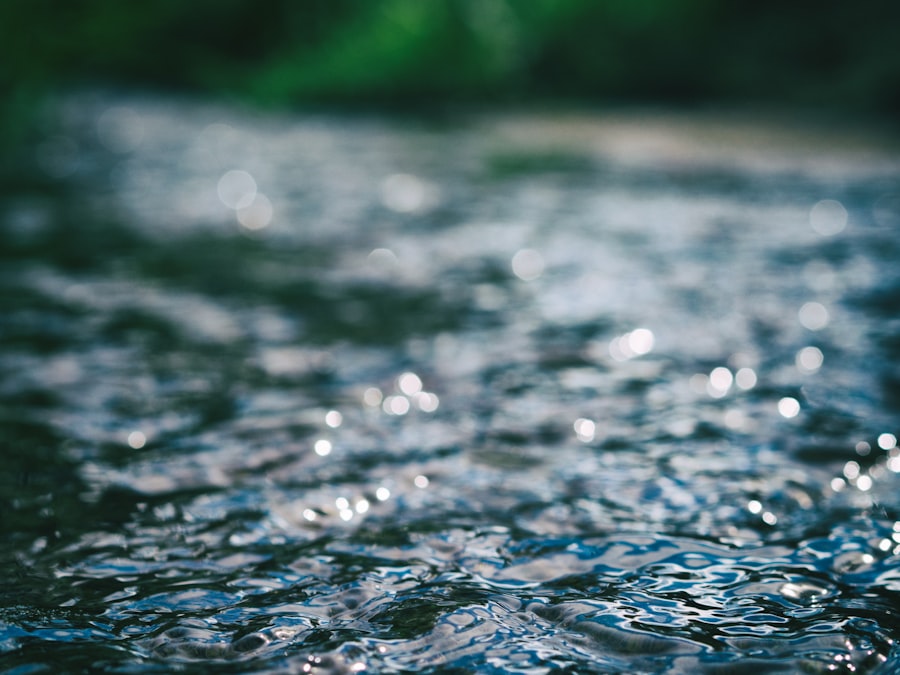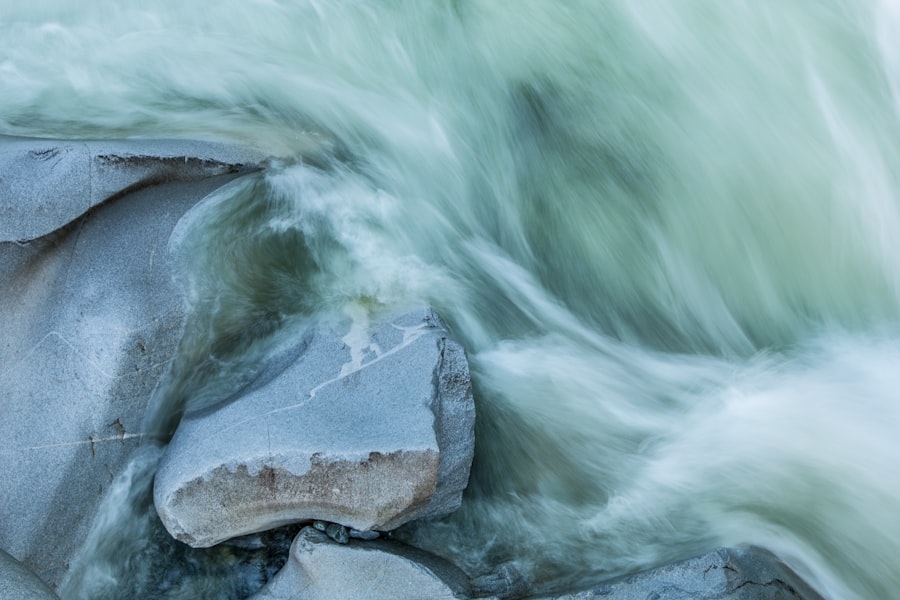The Drake Passage, a body of water located between the southern tip of South America and Antarctica, is renowned for its tumultuous seas and significant role in global oceanic circulation. Named after the English explorer Sir Francis Drake, who navigated these waters in the late 16th century, the passage serves as a critical conduit for the movement of water between the Atlantic and Pacific Oceans. Its unique geographical position not only makes it a vital area for maritime navigation but also a key player in the Earth’s climate system.
The passage is characterized by its strong currents, unpredictable weather patterns, and rich biodiversity, making it a focal point for oceanographic research. The significance of the Drake Passage extends beyond its challenging navigation; it is a crucial area for understanding the dynamics of ocean currents and their influence on global climate patterns. The passage acts as a gateway for the Antarctic Circumpolar Current, which encircles Antarctica and connects the world’s oceans.
This current plays an essential role in regulating temperatures and distributing nutrients across vast marine ecosystems. As such, the Drake Passage is not only a geographical landmark but also a vital component of the Earth’s environmental health.
Key Takeaways
- Drake Passage is a narrow stretch of water between South America’s Cape Horn and the South Shetland Islands of Antarctica, known for its strong and turbulent water flow.
- The water flow in Drake Passage plays a crucial role in global ocean circulation and climate regulation, making it an area of significant scientific interest.
- Factors affecting water flow in Drake Passage include the shape of the seafloor, the Coriolis effect, and the density of the water, all of which contribute to the passage’s unique hydrodynamics.
- Wind is a major driver of water flow in Drake Passage, influencing the direction and speed of ocean currents through the region.
- Tides also have a significant influence on water flow in Drake Passage, causing fluctuations in current speed and direction that impact the overall circulation patterns.
The Importance of Water Flow in Drake Passage
Water flow in the Drake Passage is of paramount importance for several reasons.
This exchange influences temperature gradients, salinity levels, and nutrient distribution, all of which are critical for sustaining marine life.
The flow of water through this passage also impacts weather patterns far beyond its immediate vicinity, affecting climate systems across the globe. Moreover, the water flow in the Drake Passage plays a significant role in the global conveyor belt, a system of ocean currents that regulates climate by transporting warm and cold water around the planet. The interaction between these currents helps to moderate temperatures in various regions, making it a vital component of Earth’s climate regulation.
Understanding the intricacies of water flow in this passage is crucial for predicting future climate scenarios and assessing the health of marine ecosystems.
Factors Affecting Water Flow in Drake Passage

Several factors influence water flow in the Drake Passage, including topography, temperature gradients, and salinity levels. The unique underwater landscape, characterized by deep channels and ridges, affects how water moves through the passage. These physical features can create areas of turbulence or calm, impacting the speed and direction of currents.
Additionally, variations in temperature and salinity can lead to differences in water density, which further influences flow patterns. Seasonal changes also play a significant role in shaping water flow dynamics. During summer months, melting ice from Antarctica contributes to freshwater influxes that can alter salinity levels and disrupt established current patterns.
Conversely, during winter months, increased sea ice formation can lead to higher salinity levels as seawater freezes, affecting water density and flow. These seasonal variations highlight the complexity of water movement in the Drake Passage and underscore the need for continuous monitoring to understand its implications fully.
The Role of Wind in Driving Water Flow
| Wind Speed | Water Flow |
|---|---|
| 0-5 mph | Minimal impact on water flow |
| 5-10 mph | Creates gentle ripples and small waves |
| 10-20 mph | Increases water movement and wave size |
| Above 20 mph | Significant impact on water flow, creating large waves and strong currents |
Wind is a powerful force that significantly influences water flow in the Drake Passage. The region is known for its strong westerly winds, which can drive surface currents and create waves that impact deeper water movements. These winds can enhance or diminish existing currents, leading to fluctuations in water flow that can have far-reaching effects on marine ecosystems and weather patterns.
The interaction between wind and water flow is particularly evident during storm events when high winds can generate large swells and turbulent conditions. These storms can disrupt normal current patterns, leading to changes in nutrient distribution and affecting marine life. Understanding how wind patterns interact with water flow is essential for predicting changes in marine ecosystems and assessing potential impacts on fisheries and other ocean-dependent industries.
The Influence of Tides on Water Flow
Tidal forces also play a crucial role in shaping water flow within the Drake Passage. The gravitational pull of the moon and sun creates regular fluctuations in sea level that can influence current patterns. While tidal effects may be less pronounced than those caused by wind or ocean currents, they still contribute to the overall dynamics of water movement in this region.
Tides can create localized areas of strong current flow, particularly in narrow channels or around islands within the passage. These tidal currents can enhance mixing between different water masses, promoting nutrient upwelling that supports diverse marine life. Understanding tidal influences on water flow is essential for comprehensively assessing the ecological health of the Drake Passage and its surrounding waters.
The Impact of Ocean Currents on Water Flow

Ocean currents are a dominant force in determining water flow within the Drake Passage. The Antarctic Circumpolar Current (ACC) is particularly significant, as it flows continuously around Antarctica and connects the Atlantic, Pacific, and Indian Oceans. This current not only influences local water flow but also plays a critical role in global climate regulation by redistributing heat and nutrients across vast distances.
The interaction between the ACC and other currents can lead to complex flow patterns within the Drake Passage. For instance, when warm waters from the Atlantic meet colder waters from the Southern Ocean, it creates areas of turbulence that can enhance mixing and nutrient distribution. This dynamic interplay between different currents is vital for maintaining healthy marine ecosystems and supporting biodiversity in this region.
The Effects of Climate Change on Water Flow
Climate change poses significant challenges to water flow dynamics in the Drake Passage. Rising global temperatures are leading to increased melting of Antarctic ice, which contributes to freshwater influxes that can alter salinity levels and disrupt established current patterns. These changes can have cascading effects on marine ecosystems, as shifts in nutrient distribution may impact food webs and species distributions.
Additionally, climate change is expected to influence wind patterns and intensify storm events in the region. Such changes could further exacerbate fluctuations in water flow, leading to unpredictable conditions that may threaten marine life and fisheries. Understanding how climate change will impact water flow dynamics in the Drake Passage is crucial for developing effective conservation strategies and mitigating potential risks to marine ecosystems.
Research and Monitoring of Water Flow in Drake Passage
Ongoing research and monitoring efforts are essential for understanding water flow dynamics in the Drake Passage. Scientists employ various methods to study this complex system, including satellite observations, buoy deployments, and oceanographic surveys. These tools allow researchers to collect data on temperature, salinity, current speeds, and other critical parameters that influence water movement.
Collaborative international efforts have been established to enhance research capabilities in this region. Organizations such as the International Association of Antarctica Tour Operators (IAATO) work alongside scientists to promote responsible tourism while supporting research initiatives aimed at understanding environmental changes in the Drake Passage.
Implications of Water Flow for Marine Life
The intricate dynamics of water flow in the Drake Passage have profound implications for marine life. The mixing of different water masses promotes nutrient upwelling, which supports phytoplankton growth—the foundation of marine food webs. This nutrient-rich environment attracts various species, including krill, fish, seals, and seabirds, making it a hotspot for biodiversity.
Changes in water flow patterns due to climate change or human activities could disrupt these delicate ecosystems. For instance, alterations in nutrient distribution may lead to declines in key species like krill, which serve as a primary food source for many larger marine animals. Understanding how water flow influences marine life is crucial for developing effective conservation strategies that protect these vital ecosystems.
The Connection between Water Flow and Climate Patterns
Water flow in the Drake Passage is intricately linked to broader climate patterns across the globe. The exchange of warm and cold waters through this passage influences atmospheric conditions that affect weather systems far beyond its immediate vicinity. For example, changes in ocean temperatures can impact precipitation patterns in South America or even contribute to extreme weather events elsewhere.
The relationship between water flow and climate patterns underscores the importance of understanding this dynamic system as part of global climate research efforts. By studying how changes in water movement affect atmospheric conditions, scientists can improve climate models and enhance predictions related to future climate scenarios.
Future Considerations for Understanding and Managing Water Flow in Drake Passage
As climate change continues to reshape our planet’s environment, understanding and managing water flow dynamics in the Drake Passage will become increasingly important. Future research efforts should focus on developing advanced monitoring techniques that provide real-time data on changing conditions within this critical region. Collaborative international initiatives will be essential for addressing challenges posed by climate change while promoting sustainable practices that protect marine ecosystems.
Additionally, public awareness campaigns highlighting the significance of the Drake Passage can foster greater appreciation for its ecological importance. Engaging local communities, policymakers, and stakeholders will be vital for developing effective management strategies that balance human activities with environmental conservation efforts. By prioritizing research and collaboration, society can work towards safeguarding this vital passage for future generations while ensuring its continued role as a key player in global oceanic circulation and climate regulation.
The Drake Passage is a crucial waterway that connects the Atlantic and Pacific Oceans, playing a significant role in global ocean circulation and climate regulation. For those interested in exploring more about the dynamics of water flow in this region, a related article can be found on MyGeoQuest. This article delves into the intricate patterns of ocean currents and their impact on marine ecosystems. To read more about this fascinating topic, visit the article on MyGeoQuest.
WATCH NOW! Drake Passage: Earth’s Deadliest Waters Revealed
FAQs
What is the Drake Passage?
The Drake Passage is the body of water between the southern tip of South America at Cape Horn and the South Shetland Islands of Antarctica. It connects the southwestern part of the Atlantic Ocean with the southeastern part of the Pacific Ocean.
What is the water flow like in the Drake Passage?
The water flow in the Drake Passage is characterized by strong and persistent westerly winds, which drive the Antarctic Circumpolar Current (ACC) through the passage. This current is the largest and most powerful ocean current in the world, and it plays a crucial role in the global climate system.
How does the water flow in the Drake Passage affect the global climate?
The water flow in the Drake Passage, particularly the ACC, helps to redistribute heat and nutrients around the globe. It also influences the exchange of carbon dioxide between the atmosphere and the ocean, making it an important component of the Earth’s climate system.
What are the environmental implications of the water flow in the Drake Passage?
The water flow in the Drake Passage has significant implications for marine life, as it affects the distribution of nutrients and the movement of marine species. It also plays a role in the transport of pollutants and microplastics, making it an area of interest for environmental research and conservation efforts.
